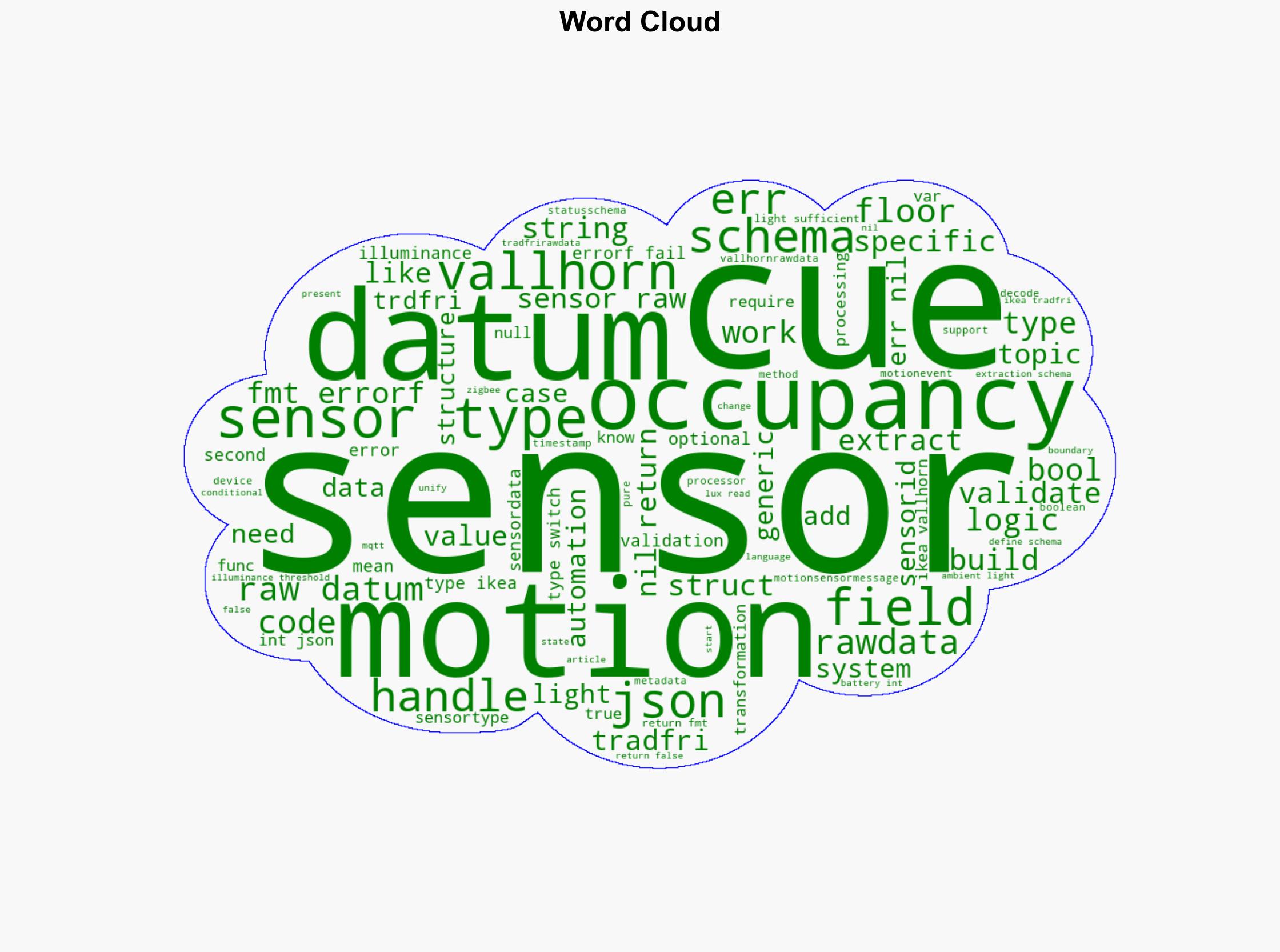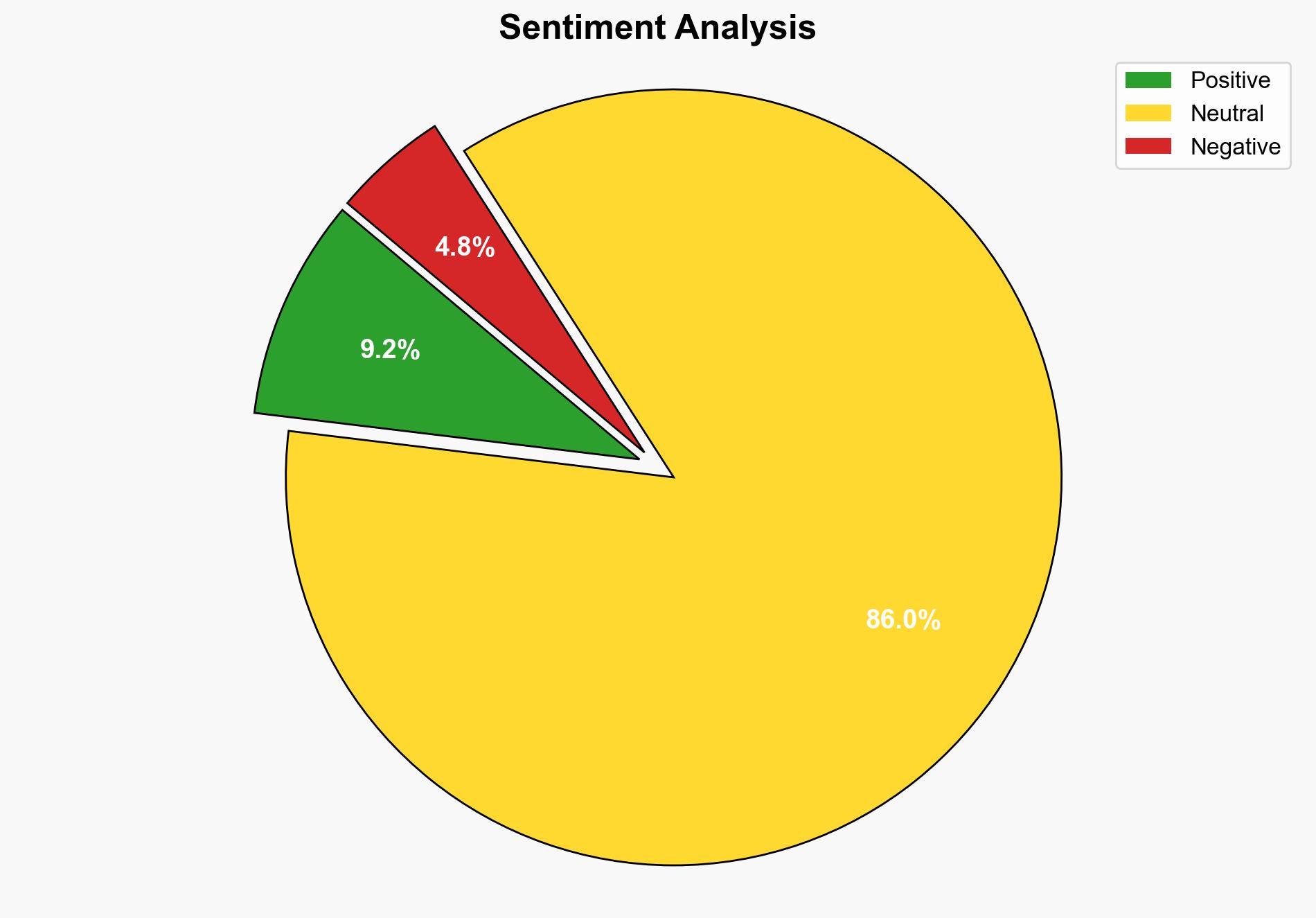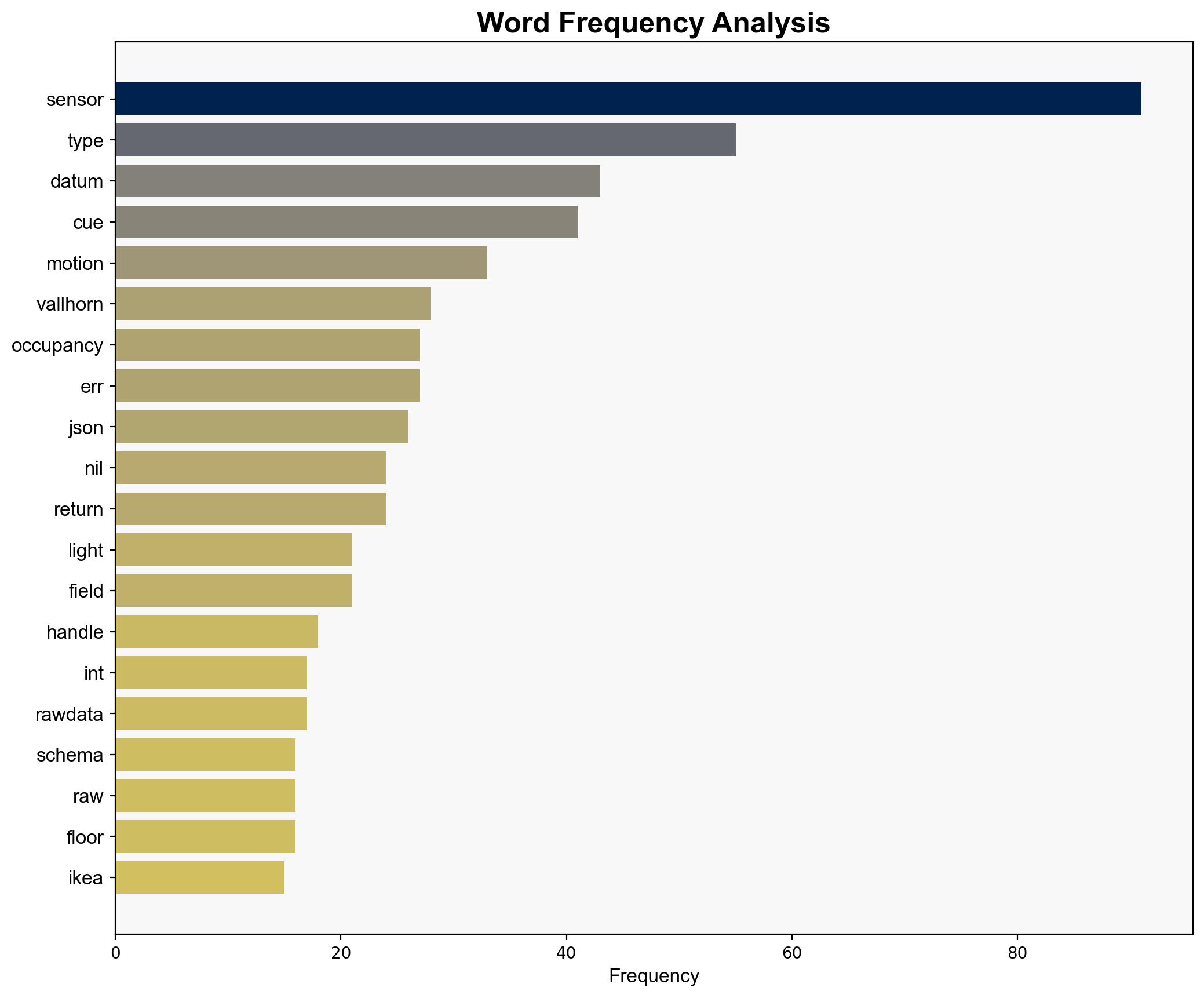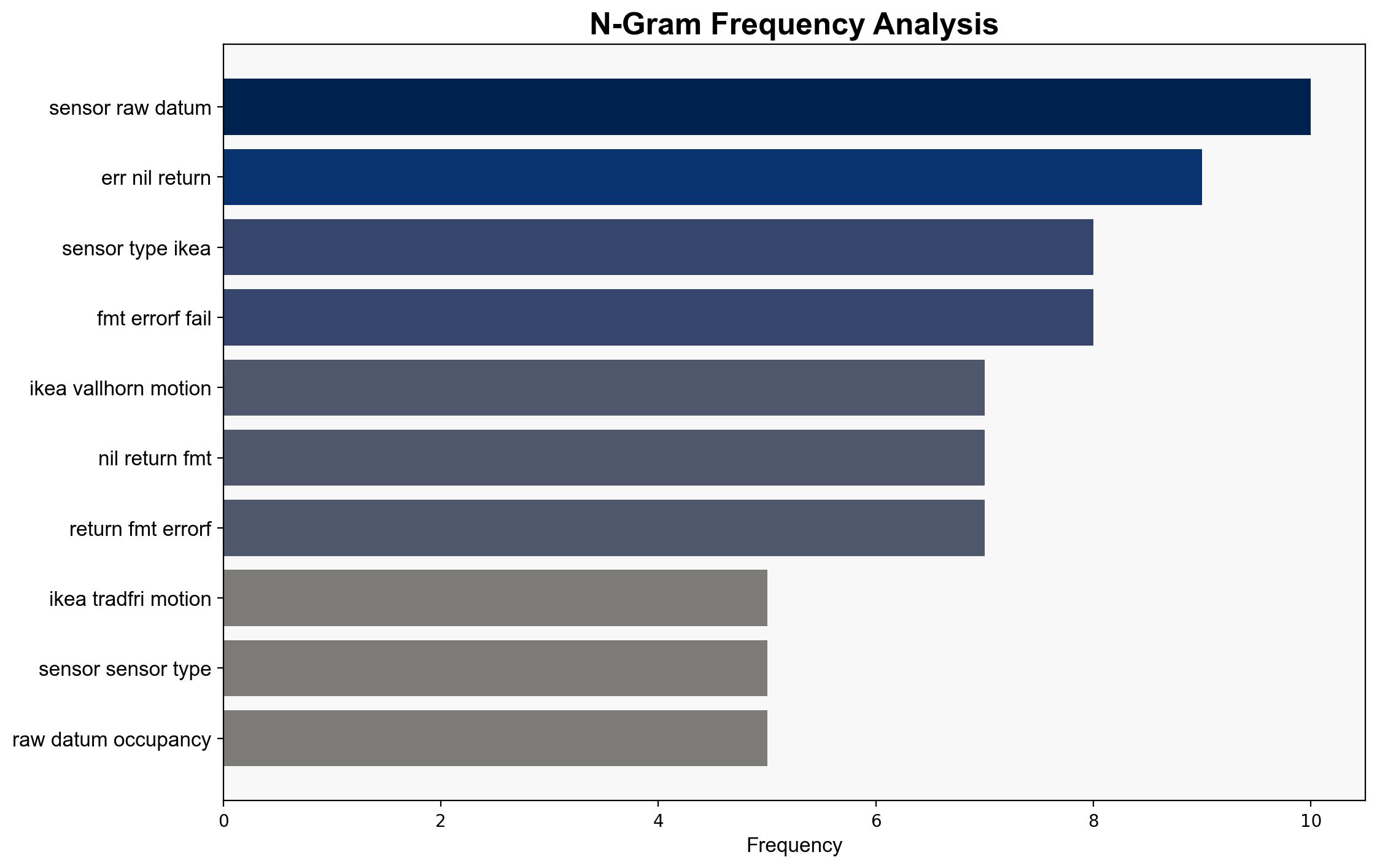Using CUE to unify IoT sensor data – Aran.dev
Published on: 2025-10-18
Intelligence Report: Using CUE to unify IoT sensor data – Aran.dev
1. BLUF (Bottom Line Up Front)
The analysis suggests that using CUE for unifying IoT sensor data presents a strategic advantage in simplifying data integration and reducing maintenance complexity. The most supported hypothesis is that CUE can effectively streamline IoT data processing, enhancing system efficiency and flexibility. Confidence level: Moderate. Recommended action: Further exploration and testing of CUE’s capabilities in diverse IoT environments to validate its scalability and robustness.
2. Competing Hypotheses
Hypothesis 1: CUE significantly enhances the integration and processing of IoT sensor data by providing a unified schema, reducing the complexity of handling diverse sensor types and data structures.
Hypothesis 2: The adoption of CUE introduces new complexities and potential inefficiencies due to its learning curve and integration challenges with existing systems, which may offset its benefits.
3. Key Assumptions and Red Flags
Assumptions:
– CUE is assumed to be compatible with all existing IoT systems and protocols.
– Users have the technical expertise to implement CUE effectively.
Red Flags:
– Lack of detailed performance metrics or case studies demonstrating CUE’s effectiveness in real-world scenarios.
– Potential over-reliance on CUE without considering alternative solutions or hybrid approaches.
4. Implications and Strategic Risks
The integration of CUE could lead to more streamlined IoT systems, reducing operational costs and improving data accuracy. However, if CUE fails to deliver on its promises, organizations may face increased costs and system disruptions. The strategic risk involves balancing innovation with reliability, ensuring that the adoption of new technologies does not compromise existing system stability.
5. Recommendations and Outlook
- Conduct pilot projects to assess CUE’s performance in various IoT environments.
- Develop training programs to equip teams with the necessary skills to implement CUE effectively.
- Scenario-based projections:
- Best Case: CUE becomes a standard in IoT data processing, leading to widespread adoption and improved system efficiencies.
- Worst Case: CUE’s integration challenges lead to significant disruptions and increased costs, deterring its adoption.
- Most Likely: CUE is adopted selectively, with organizations balancing its use with other technologies to optimize performance.
6. Key Individuals and Entities
The report does not mention specific individuals by name. Entities involved include IoT device manufacturers and software developers focused on home automation systems.
7. Thematic Tags
cybersecurity, IoT integration, data processing, technology innovation




